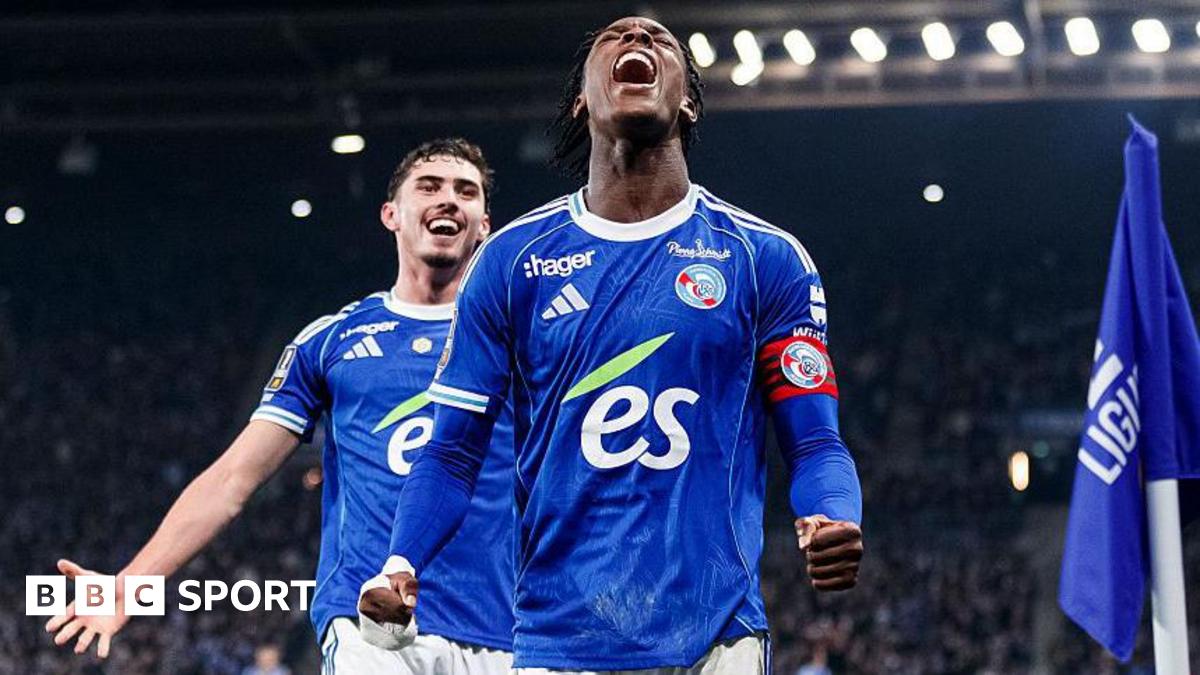Chelsea: Strasbourg president says they ‘aren’t Chelsea’s feeder club’
Keller, who led the consortium that bought Strasbourg for one euro in 2012, has helped revive a club that were playing in the amateur fourth tier after financial collapse.
They returned to the Ligue 1 within five years, and are now competing on the European stage – two years after entering into the partnership with Chelsea.
“Discussions with Behdad Eghbali and Todd Boehly have been about how to create a smart multi-club model from the beginning, while using more financial power,” said Keller.
“We improved every year and were in a strong financial position before the takeover, but with new partners we can dream a little bigger and think about getting into the top six or seven to qualify for Europe every year.”
At the Stade de la Meinau, BlueCo’s investment is evident, with cranes finishing the stadium’s expansion from 26,000 to 32,000 seats – the final touches of a £157m redevelopment.
Walking around the modernised stadium, there is incredible attention to detail, including monuments to every male and female player to wear the blue jersey.
“The good balance is ambition but with tradition,” Keller said.
“We are investing a lot to set up an organisation around the team to help the players go higher. That’s in staff, data, physio, player care and scouting networks.”
Sporting director David Weir was hired last month, after leaving Brighton.
But, just as at Chelsea, Strasbourg’s squad had already been transformed by BlueCo – with £112m spent on building the youngest squad – averaging just 21.5 years of age – in the big five leagues. Chelsea are fourth – behind their partner club, plus Paris St-Germain and Parma.
Chelsea midfielder Andrey Santos was the first to benefit from a move between the clubs – spending 18 months on loan at Strasbourg – and says he still watches their matches and texts manager Liam Rosenior.
“We try to work well with the technical team of Chelsea to have good players for Strasbourg,” says Keller. “It would have been impossible for us to have Mike Penders, Andrey Santos or Dorde Petrovic in the past, so that’s positive.
“Strasbourg and France is a good step for the young players to develop, and this BlueCo project is about building quality.
“We are investing a lot in a young generation. It can happen that one player per year is good enough for Chelsea. But our project is to have other players around top clubs in Europe, not just Chelsea. It’s not correct to say they are coming to go to Chelsea.
“They are coming to Strasbourg because of the ambition.”
Strasbourg sold £74m of players in the summer – including Dilane Bakwa to Nottingham Forest and former captain Habib Diarra to Sunderland, both for about £30m.






